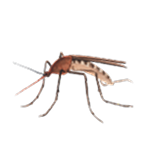
GROW GUIDE
Rosemary
Rosmarinus officinalis
Plant Description

Rosemary
Characterized by its woody stems and needle-like leaves, rosemary is a robust herb with a pungent, slightly bitter taste and a pine-like aroma.
Originating from the Mediterranean region, it belongs to the mint family and is revered in culinary traditions for its ability to complement a wide range of dishes, including roasted meats, breads, and vegetables.
Quick Facts:
-

Sun Requirements
Full Sun
-

Days To Sprout
14-21 Days
-

Days To Harvest
90-200 Days
-

Plant Spacing
24-36"
-

Seeds Per Hole
3
-

Planting Depth
1/4"
Best Planting Locations
-

Windowsills
Good for compact growth and easy access, requires sufficient sunlight.
-
Balconies
Suitable for container gardening with adequate sunlight and airflow.
-

Raised Beds
Excellent as it needs well-drained soil and good air circulation.
-

Containers
Ideal for controlling soil and moisture; can be moved to ensure sufficient sunlight.
Getting Started

-
1
Find the Spot
Requires full sun and can tolerate some wind, making it ideal for open, sunny gardens. It can also grow indoors near a bright, sunny window.
-
2
Prep the Soil & Fertilizer
Use well-drained, sandy soil. Rosemary does well in poor soils but benefits from a little compost mixed in. Avoid over-fertilizing, which can harm its flavor and scent.
-
3
Plant the Seeds
Before planting, soak the seeds in water for 12-24 hours to encourage germination. You can also scarify the seeds by gently scratching them with sandpaper or a nail file to create small breaks in the seed coat, helping water penetrate.
Plant 4 seeds in each hole about 1/4" deep. Lightly cover seeds with a small amount of mix, ensuring they are still exposed to light. Place in a warm and sunny location, and keep the soil moist, but not waterlogged, during germination.
Aim for a soil temperature between 65° to 70° F. Space plants about 24-36 inches apart as rosemary can grow into a large bush.
Good Neighbors:
-

Beans:
The varying root depths of rosemary and legumes mean they won't compete for nutrients, promoting better growth for both.
-

Cabbage:
Rosemary has a strong aroma that covers the scent of brassicas, keeping pests away.
-

Carrots:
Rosemary has a strong aroma that covers the scent of carrots, keeping pests away. Plant at the edge of carrot rows.
-

Sage:
Similar growing requirements, rosemary plants intensify the health and flavor of sage.
-

Thyme:
They require similar soil and sunlight conditions, and are sure to protect the garden from many pests.
Enemy Plants:
-

Basil, Cucumber & Pumpkin:
Different growing requirements
Attractants:
-

Butterflies & Bees
Rosemary flowers produce nectar, which is a rich food source.
Repellents:
-

Bean Beetle
Rosemary repels many bean parasites
-

Cabbage Moths
Repelled by rosemary's aroma
-

Mosquitoes
Repelled by rosemary's aroma
-

Carrot Fly
Repelled by rosemary's aroma
Best Time to Plant
USDA Hardiness Zones


Day to Day Maintenance

-
Watering
Prefers drier conditions and should be watered sparingly. Ensure the soil is well-drained and only water when the soil feels dry to the touch. Be cautious of over-watering.
-
Pruning
Prune in the spring to maintain its shape and size. Regular pruning also encourages fresh, fragrant foliage. Cut back to just above a leaf joint to encourage branching.
The Harvest

-
Gathering
Cut sprigs as needed, selecting shoots that are not overly woody. Snip them from the top to promote lateral growth and denser foliage.
-
Harvest early in the morning, especially if you plan to dry the sprigs, as this is when the aromatic oils are at their peak.
Favorite Uses
-
Lamb
-
Chicken
-
Stews
-
Tea
-
Olive Oil


How to Store
-
Oil Preservation
Duration: Several months
Location: Store in the freezer
Method: Wash and dry the sprigs, then place them whole in freezer bags.
-
Vinegar Preservation
Duration: Several months
Location: Refrigerator
Method: Submerge in vinegar in a sealed jar. Use the infused vinegar for cooking or dressings.
-

Freezing
Duration: Several months
Location: Store in the freezer
Method: Wash and dry the sprigs, then place them whole in freezer bags.
-
Drying
Duration: One year
Location: Warm, dry, and well-ventilated area out of direct sunlight
Method: Hang bunches upside down in a dark, dry place or spread them on a drying rack.
Fun Facts

-
Memory Enhancer
Rosemary is traditionally associated with memory and remembrance, often worn at weddings and funerals alike to symbolize loyalty.
-
Natural Air Freshener
Due to its strong, pleasant scent, rosemary branches are often used in bouquets and arrangements to freshen the air naturally.
-
Ancient Lore
In ancient times, rosemary was believed to have protective powers. People crafted talismans from it to ward off poisoning and evil spirits!
-
Name Origins
“Rosemary” comes from the Latin rosmarinus, meaning dew of the sea—a nod to its coastal roots and knack for thriving with just a little water.
Subscribe to our Newsletter: "The Small Garden Chronicles"
Where curious growers gather for garden inspiration.









